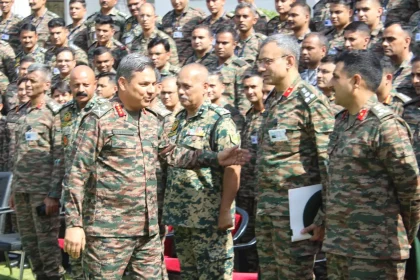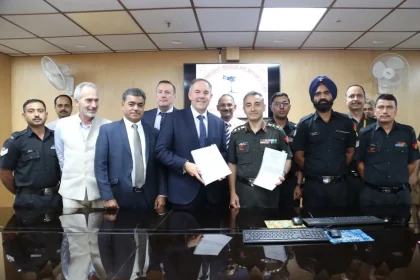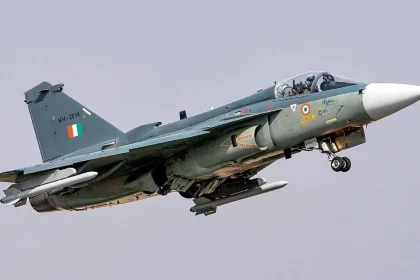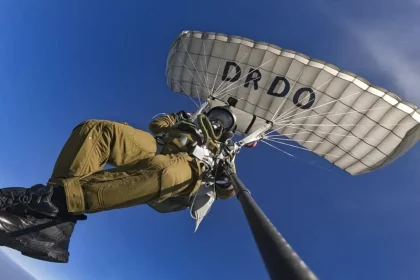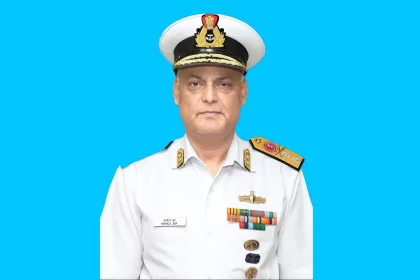Lt Gen AVS Rathee Reviews Operational Readiness of Golden Katar Division at Ahmedabad Military Station
Lt Gen AVS Rathee commends Golden Katar Division’s combat readiness and modernization efforts at Ahmedabad Military Station.
Indian Army Procures Lightweight Modular Missiles and Night Sights to Boost Operational Capabilities
Indian Army enhances drone-kill capabilities and night-fighting efficiency with indigenous missile systems and advanced assault rifle sights.
India Surpasses China to Become Third Most Powerful Air Force in the World
India’s Air Force leaps past China to become the third most powerful globally, reflecting modernization, operational readiness, and growing strategic…
DRDO Successfully Tests Indigenous Military Combat Parachute System at 32,000 ft
Indigenous Military Combat Parachute System successfully deployed at 32,000 ft, enhancing India’s high-altitude airborne operational capabilities and self-reliance.
Bomb-Threat Mock Exercise Successfully Conducted at Surat Airport
Inter-agency drill at Surat Airport enhances emergency preparedness, coordination, and response capabilities against potential bomb threats.
Rear Admiral Manoj Jha Assumes Charge as Chief Staff Officer (Operations), Eastern Naval Command
An accomplished Gunnery Specialist and seasoned naval leader, Rear Admiral Manoj Jha takes over as Chief Staff Officer (Operations) to…

